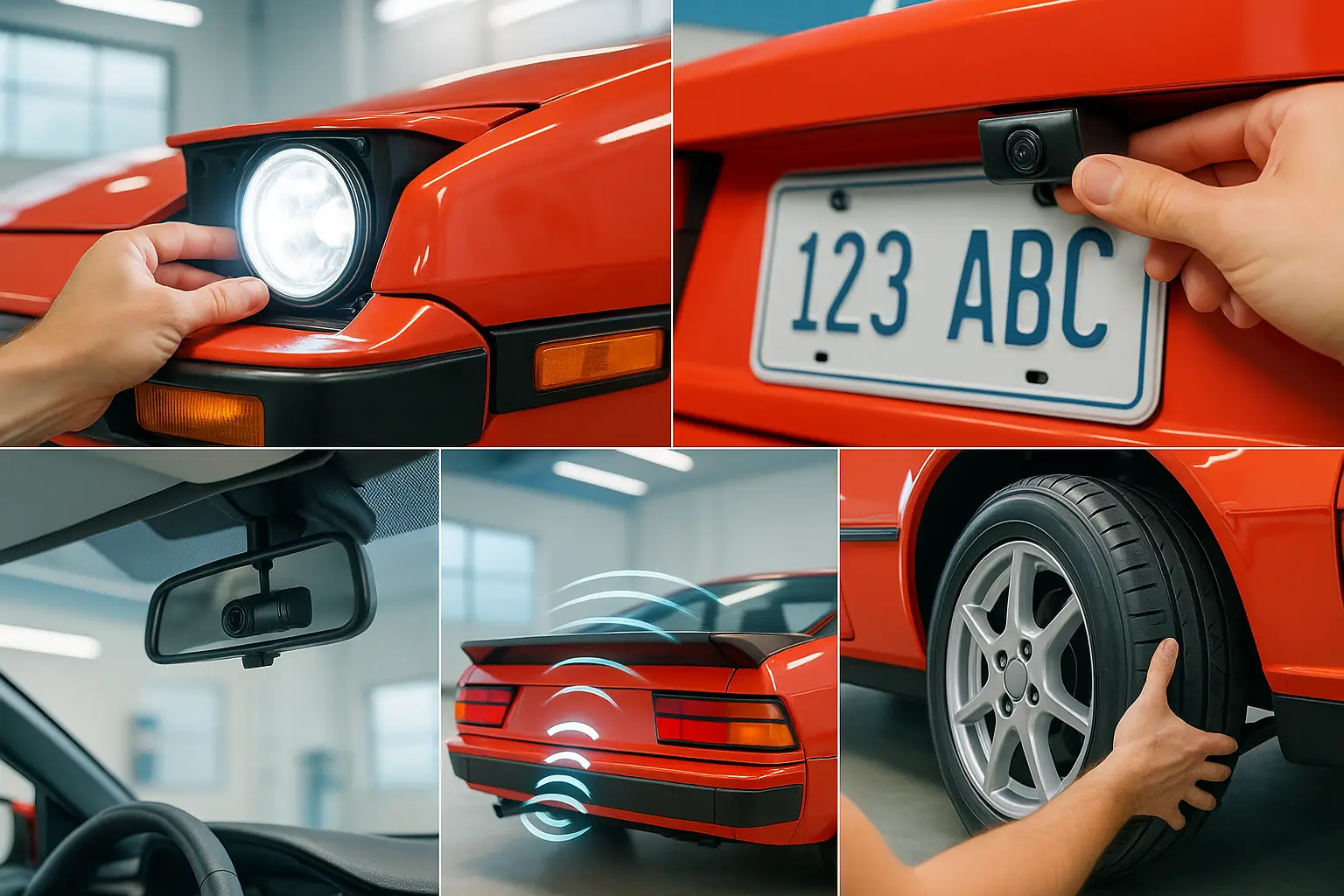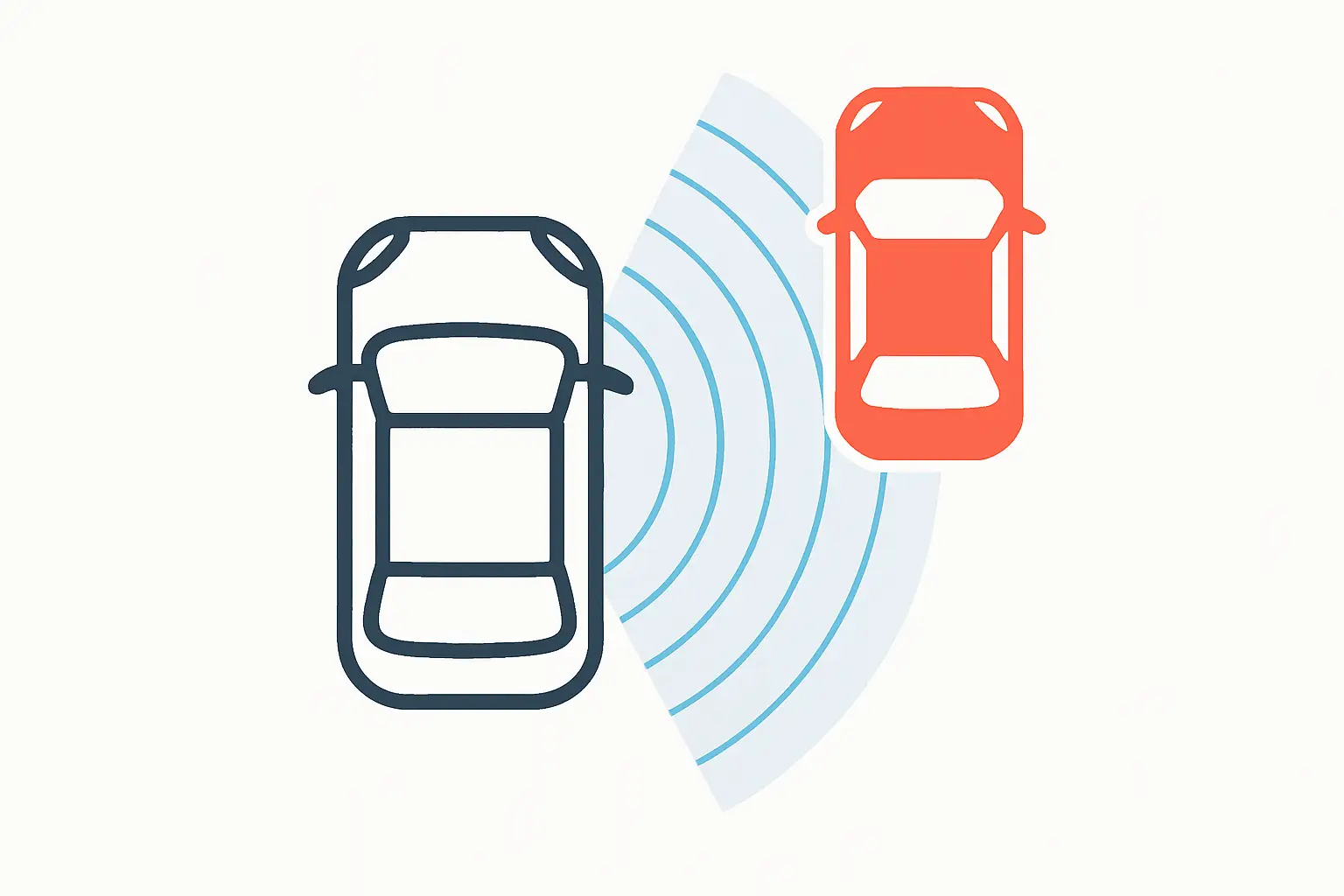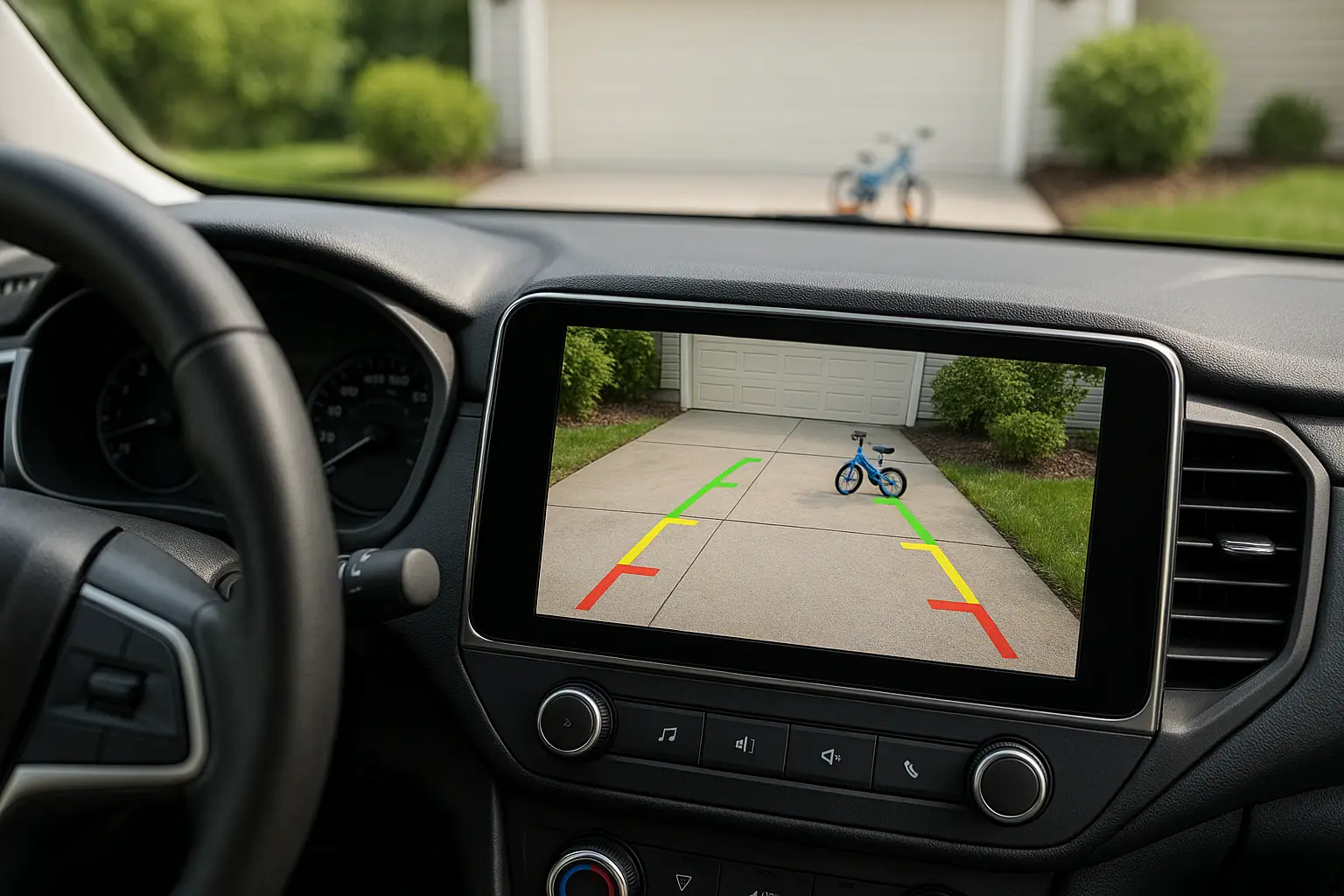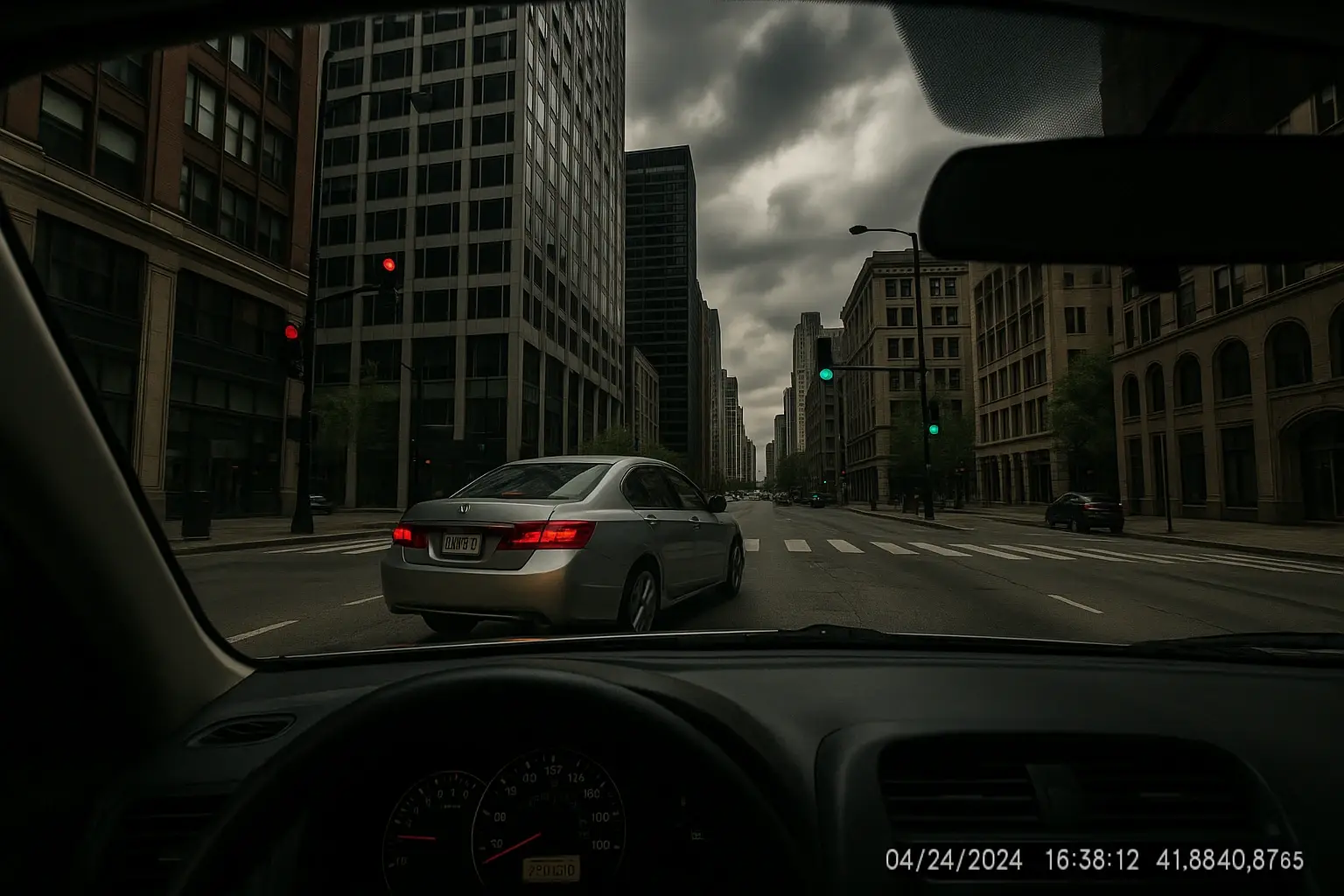Your classic car is your pride, but every highway merge feels like a gamble. Driving without modern safety features1 can be stressful. These five essential upgrades will transform your beloved vehicle.
To comprehensively make an older car safer, you must adopt a layered strategy. This involves enhancing your situational awareness with blind spot sensors and a backup camera, creating an objective record with a dash cam, improving visibility with LED headlights, and maximizing grip with high-quality tires.

My first car was a 90s sedan with massive pillars and a tiny rear window. I loved that car, but I was constantly filled with anxiety. Parallel parking was a nightmare, and changing lanes on the freeway required a prayer. I learned that you don't have to choose between the car you love and the safety you need. By strategically adding modern technology, you can bridge the decades-long gap in safety features. Let’s dive into the upgrades that provide the biggest return on safety and peace of mind.
Can Blind Spot Sensors Truly Eliminate Dangerous Blind Spots?
It's a gut-wrenching moment: you signal, check your mirrors, and start to move over, only for a horn to blare. A car was hiding where you couldn't see it.
Yes, a blind spot monitoring system is the most effective way to virtually eliminate the dangerous blind spots inherent in any car. By providing a clear, unambiguous visual or audible alert, it actively prevents you from making a lane change into an occupied space.

Mirrors and shoulder checks are essential driving habits, but they only provide a snapshot in time. A vehicle can move into your blind spot in the single second it takes you to look forward again. This is where blind spot sensors become your tireless co-pilot. I installed a system on my weekend car, and it has prevented more close calls than I can count. These systems don't just alert you; they change your awareness. They use radar or ultrasonic sensors2, usually mounted inside the rear bumper, to constantly monitor the adjacent lanes. When a car enters the detection zone, a small light on your side mirror or A-pillar illuminates. It’s a subtle, confidence-inspiring notification. If you activate your turn signal while the zone is occupied, the system will escalate the warning with a beep, grabbing your attention when it matters most.
Radar vs. Ultrasonic Systems
Aftermarket systems primarily use two types of technology, each with its own strengths.
| Sensor Technology | How It Functions | Key Advantages & Disadvantages |
|---|---|---|
| Radar | Emits microwave signals that bounce off objects. | Pro: Highly accurate in all weather (rain, fog, snow). Longer detection range. The professional standard. Con: More expensive. |
| Ultrasonic | Emits high-frequency sound waves. | Pro: Very affordable and effective in clear conditions. Con: Can be less reliable in heavy rain or if sensors are dirty/icy. |
For the most reliable, factory-like performance that you can count on in any condition, a radar-based system is the superior choice.
Is a Backup Camera a Critical Safety Tool or Just a Convenience?
In many older cars, especially trucks and SUVs, the area directly behind you is a complete mystery. This makes reversing a low-speed but high-stress event, full of risks.
A backup camera is a critical safety tool, not just a convenience. It eliminates the massive blind zone behind a vehicle, drastically reducing the risk of tragic backover accidents involving children or pets and preventing costly low-speed collisions with objects.

The statistics on backover accidents are sobering, and the primary cause is the simple fact that drivers can't see what's directly behind them. This is why backup cameras have been mandatory on new vehicles in the US since 2018. Adding one to an older vehicle is arguably one of the single most impactful safety upgrades3 you can make. It transforms parking from a guessing game into a precise maneuver. More importantly, it gives you the power to see a child's tricycle, a pet, or a person walking behind your car. I once avoided backing into a low concrete pillar that was completely invisible from my driver's seat, an incident that would have easily cost hundreds in bumper repairs. The investment pays for itself in both safety and savings.
Choosing Your Backup Display
- Standalone Monitor: The simplest option. A small screen mounts to your dash or windshield. It's easy to install and budget-friendly.
- Replacement Rearview Mirror: This is a very clean solution. It looks like a normal mirror until you shift into reverse, at which point a portion of the mirror becomes a video screen.
- In-Dash Head Unit: If you're upgrading your car stereo to a modern touchscreen unit, this is the best option. It provides the largest, clearest picture and a seamless, factory-installed look.
Look for a camera with a wide viewing angle (170 degrees is great) and dynamic grid lines, which bend as you turn the steering wheel to show your projected path.
Does a Dash Cam Do More Than Just Record Accidents?
An accident is over in seconds, but the aftermath of finger-pointing, insurance claims, and legal issues can last for months. Without proof, your word is all you have.
Yes, a dash cam's value extends far beyond accident recording. It serves as your irrefutable witness against insurance fraud, hit-and-runs, and wrongful tickets. Furthermore, knowing you are being recorded often subconsciously encourages safer, more accountable driving habits.

I consider my dash cam to be essential equipment. It's a "set it and forget it" device that provides immense protection. Its primary job is to protect you from liability. In a "crash-for-cash" scam where someone brakes suddenly in front of you, the video evidence is invaluable. If someone dings your car in a parking lot and drives off, a dash cam with "parking mode" can capture their license plate. The internal G-sensor is a key feature; it detects a sudden impact or jolt and automatically locks the current video file, preventing it from being overwritten by the continuous loop recording. This ensures your critical evidence is always saved. It’s a small, silent guardian that works 24/7 to protect you financially and legally.
Essential Dash Cam Features Explained
- Video Resolution (1080p minimum, 4K recommended): Higher resolution isn't just for pretty videos; it's crucial for capturing details like license plates from a distance, which can be the difference in an insurance claim.
- G-Sensor: This accelerometer detects forces associated with an accident or hard braking and automatically saves and protects the footage. This is a non-negotiable feature.
- Parking Mode: This allows the camera to monitor your vehicle when it's parked. It will wake up and record if it detects an impact or motion, but usually requires a hardwire kit for continuous power.
- GPS Logging: This embeds your speed and location data into the video file, which can be used to prove you were following the speed limit and where the incident occurred.
Are LED Headlights a Gimmick or a Genuine Safety Upgrade?
Driving at night with old halogen headlights feels like you're trying to see through a dim, yellow fog. You strain to see road edges and potential hazards until they're dangerously close.
Upgrading to LED headlights is a genuine and dramatic safety upgrade. They produce a significantly brighter, wider beam of clean, white light that more closely mimics daylight, allowing you to identify hazards, pedestrians, and animals far earlier and with less eye strain.

The difference between halogen and LED headlights is one of the most immediate and noticeable safety improvements you can make. Standard halogen bulbs produce a warm, yellowish light (around 3200K) that can make it difficult for our eyes to perceive contrast and color at night. Modern LEDs produce a crisp, white light (typically 5500K-6000K), which is much closer to the color temperature of daylight. This allows your brain to process visual information faster and more accurately. The beam pattern is also superior, illuminating more of the road ahead as well as the crucial shoulder areas. You'll see street signs from further away and spot a deer by the roadside much sooner, giving you precious extra seconds to react. They also last exponentially longer than halogen bulbs, meaning you won't be caught out with a burned-out headlight.
The Critical Importance of Proper Aiming
With great power comes great responsibility. Because LEDs are so bright, improper installation can be dangerous.
- Don't Blind Others: An LED bulb installed in a housing designed for halogen can scatter light upwards, directly into the eyes of oncoming drivers. This is incredibly dangerous.
- Aim Them Correctly: After installing LED bulbs, you must have your headlights professionally aimed. Alternatively, you can learn to do it yourself against a flat wall. Properly aimed LEDs will have a sharp, horizontal cutoff line, ensuring the light stays on the road and out of other drivers' eyes.
Why Are Quality Tires the Ultimate Safety Feature?
We get excited about electronic upgrades, but we often neglect the only four parts of the car that actually touch the road. All the safety systems in the world are useless if your tires can't grip.
High-quality tires are the most critical and foundational safety feature on any car. They directly dictate braking distance, steering response, and stability in wet or adverse conditions. No other single component has a more profound impact on a car's ability to avoid an accident.

Think about this: your car's entire ability to accelerate, turn, and stop is handled by four patches of rubber, each about the size of a postcard. That's your contact patch. When that patch is made of old, hardened rubber or has worn-out tread, its ability to grip the pavement is severely compromised. I learned this the hard way years ago, hydroplaning on worn tires in a rainstorm. It was terrifying. A new set of high-quality tires completely transformed the car's stability. Investing in good tires from a reputable brand shortens your emergency braking distance, provides predictable handling when you need to swerve, and dramatically improves resistance to hydroplaning in the rain. It is the single most important safety investment you can make.
Choosing the Right Rubber for the Road
- All-Season Tires: The best choice for most drivers in moderate climates. They offer a good balance of performance in dry, wet, and light snow conditions.
- Summer Tires: Offer the absolute best grip and handling in warm weather, both dry and wet, but should not be used in near-freezing or snowy conditions.
- Winter/Snow Tires: A must-have for anyone who drives in regular snow and ice. The rubber compound stays soft in the cold and the tread is designed to bite into snow for superior traction.
Check your tire pressure monthly and check your tread depth with the penny test. This basic maintenance ensures your most important safety feature is always ready to perform.
Conclusion
Bringing an older car into the modern era of safety is a holistic process. It’s about creating a complete system of awareness, visibility, and control. These upgrades—from the electronic eyes of sensors to the mechanical grip of tires—work together to build layers of protection. They empower you to enjoy the unique character and soul of your older car with the peace of mind and confidence of a brand-new one.


